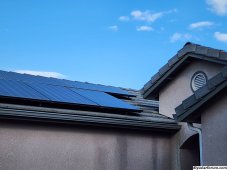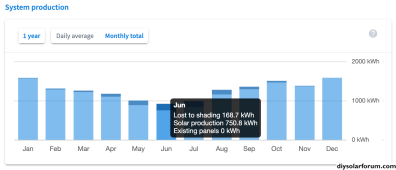The situations where optimizers pay for themselves through increased output are few and far between.I just let the shading happen unless it was midday. [b[I don't think it's worth it to buy optimizers if 99% of the day it is not shaded[/b]
In the case of the vertically-oriented shading you pictured, optimizers would not change much of anything.
I believe they boost current at the expense of voltage, so even when current was near zero because MPPT minimum forced panel voltage close to Voc, they won’t change anything.
And if I have it backwards and they boost voltage at the expense of current, you would need an optimizer on every panel in the string to get a slightly earlier startup in the morning (marginal / inconsequential increase on a % basis of full-day production).
If incremental cost beyond RSD is close to $0, why not? But when incremental cost beyond RSD approaches ~half the cost of an additional panel, hard to justify…





